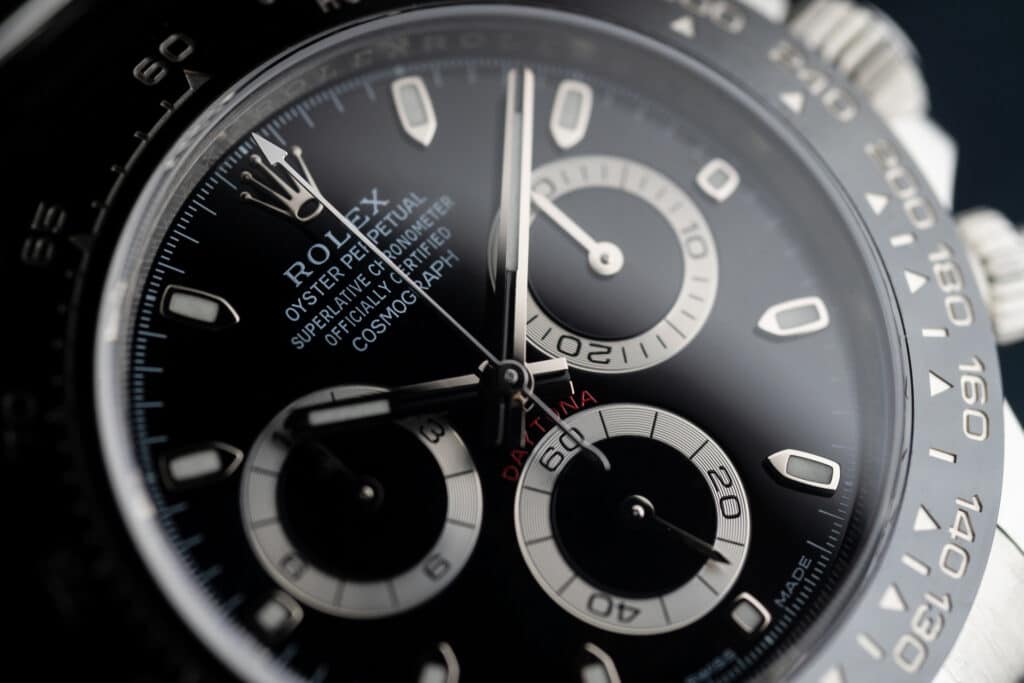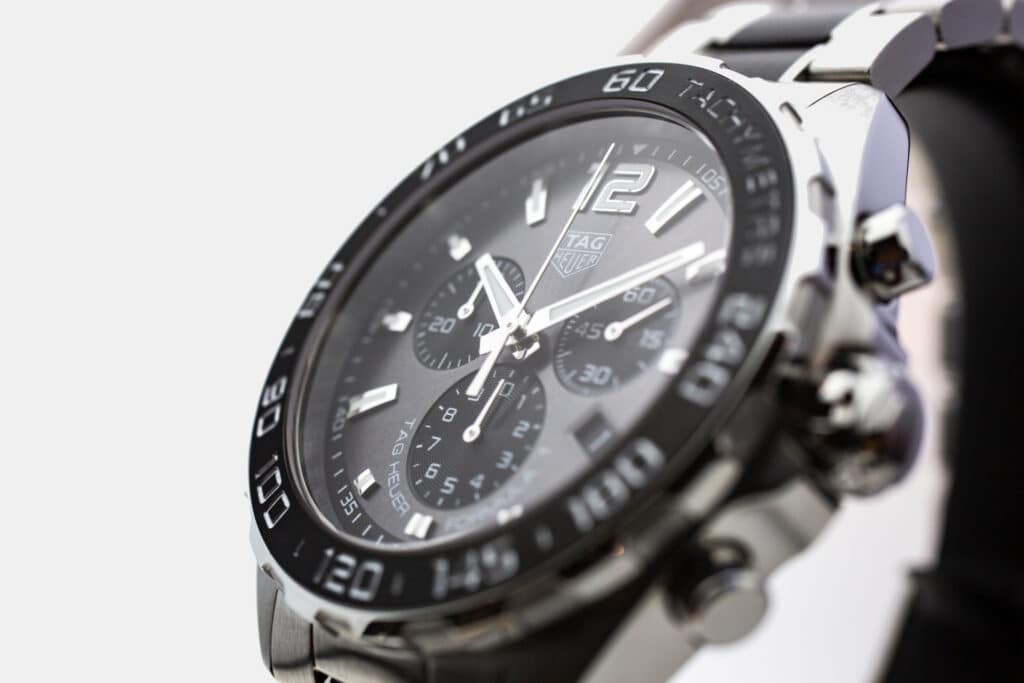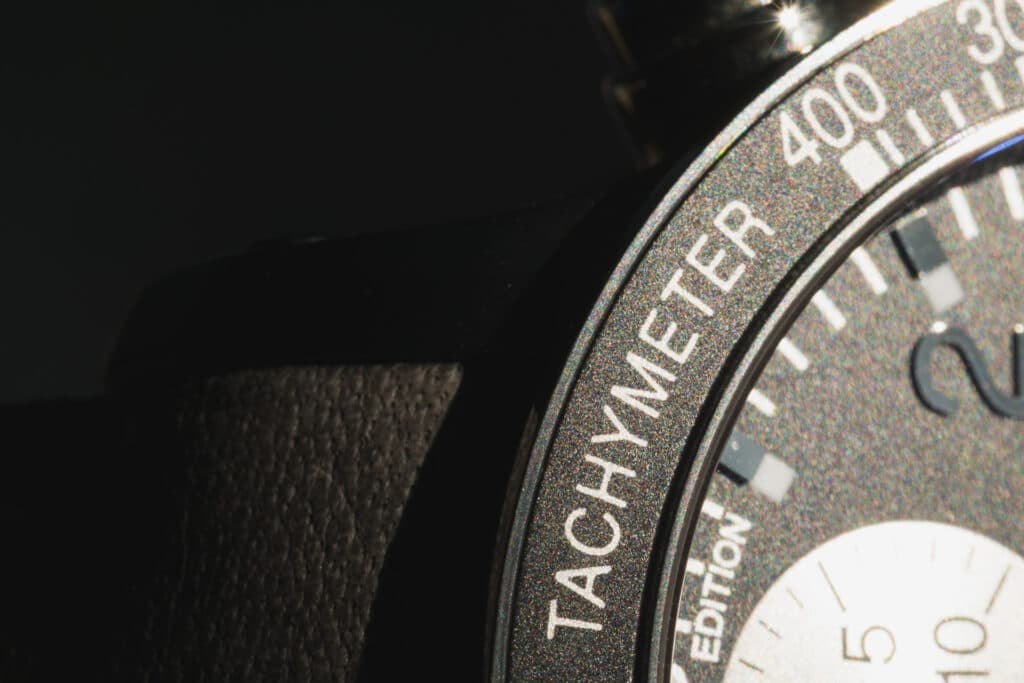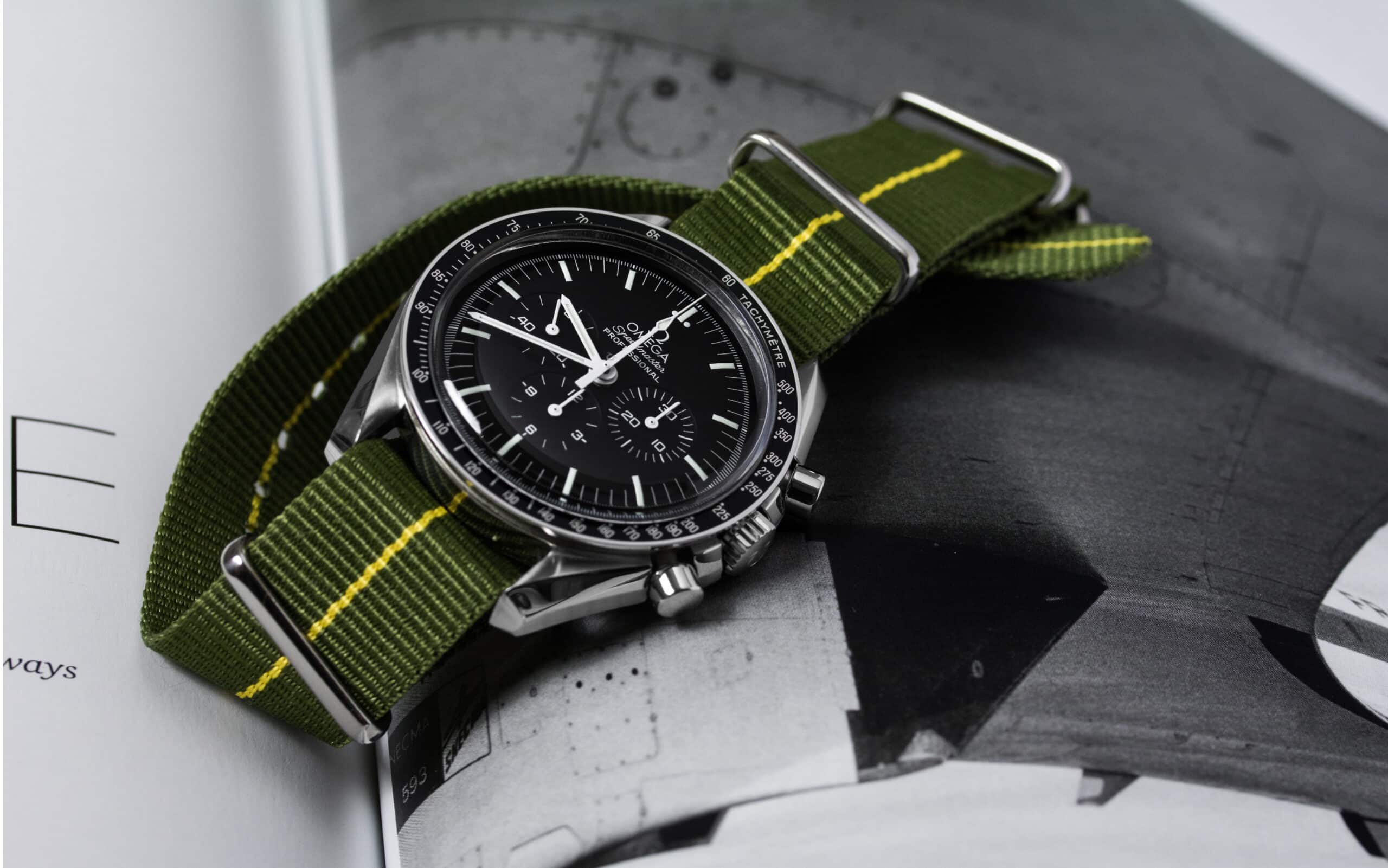What early watchmaker would’ve thought that slapping a tachymeter on a chronograph would result in such an enduring aesthetic? Chronos were already so busy-looking, all practicality and no fashion. Now they were going to tack another measurer on there? One that would go all the way around the dial? Certainly this would only last for as long as the technology evolved beyond it—said watch-wearers of the past, wrongly. Though tachymeters are horological staples today, technology did indeed evolve beyond them, so few people actually know how to use a tachymeter. If you’re not one of them, we’re here to change that.
The lasting popularity of tachymeter watches is likely due to the fact that, in the turn of the 20th century, pilots and professional racers were their main consumers. We all want to feel like adventurers from time to time. Plus, these circular measurers can be used for a lot more than you may realize.

What a tachymeter actually does
A tachymeter scale is usually located around the watch dial, often on the bezel, sometimes on the outer portion of the dial itself, typically just outside the seconds track. Most commonly, they start at 500 and descend to 60.
They’re used to measure speed against time or to measure distance based on speed. All of this is independent of unit, meaning you can use your tachymeter in kilometers, meters, nautical miles, regular miles, and so on.
Technically, the formula that the tachymeter runs on is the algebraic equation, T=3600/t. The large T represents the tachymeter scale itself, the small t represents the time it takes for the event you’re measuring to happen, and 3600 is the number of seconds in one hour.
“They’re used to measure speed against time or to measure distance based on speed. All of this is independent of unit, meaning you can use your tachymeter in kilometers, meters, nautical miles, regular miles, and so on.”
In reality, you can mostly forget the algebra of it all. This equation is just the function that’s happening to churn out the results you get when following the simple directions below.
Calculating real-time speed and average speed
Let’s say you want to see how fast a car is going in real time. Let’s say it’s a Dodge Viper GTS-R and it’s on a one-mile racetrack, and you’re using an Omega Speedmaster.
First, before you do anything, you need to let the GTS-R get to a constant speed. That’s why racetracks usually have a zero-mile marker for the car to pass before we start measuring.
Once it gets past that marker, and is presumably past its acceleration period, now at a constant rate of motion, you activate your Speedy’s chronograph by pressing the top pusher.
As soon as the Viper hits the one mile marker, stop the chronograph by pressing the pusher again.

From there, you’ll notice that the now-stopped chrono second hand is pointing at one number at the seconds track and a corresponding number on the tachymeter scale. In this example, it’s probably somewhere between 17 and 18 seconds, with a corresponding tachymeter number of 205.
The GTS-R took 17.5 seconds to finish and was going 205 miles per hour. Remember: This is real-time speed, since the car isn’t accelerating or decelerating.
To really bring home the fact that you can use a tachymeter for any unit of measurement, let’s pretend we airlifted the Dodge Viper to England, where it’s now on a one-kilometer racetrack, one with a bunch of bends and curves, making it impossible to maintain a consistent speed.
The tachymeter result would end up being the average speed.
So, you have your Speedy in hand. The Viper goes past the starting line and you activate the chronograph. It then goes past the one-kilometer mark, and you turn the chronograph off.
The stopwatch second hand is stopped at 13 seconds, with the corresponding tachymeter at 276. Its average speed in this particular track was 276 kilometers per hour.

Calculating distance
Just as calculating speed requires we know what we’re measuring against (in the prior examples, we knew the length of the race tracks), using a tachymeter to figure out distance requires we at least know the constant speed at which we’re traveling.
Okay, so now we’re in a helicopter that’s going 160 miles an hour. Look at your tachymeter scale: 160 corresponds to 23 seconds. This means that whenever you start the chrono, from the moment the stopwatch second hand starts moving to the time it hits 23 seconds, that’s one mile traveled in the helicopter.
Here’s an example that requires just a bit more math. You’re in this same helicopter looking for a specific place to land—let’s say there’s a buried treasure there. At one point, the map you’ve been using flies off into the wind, but you remember that from the very point you’re at, you just need to go 2.5 more miles in the same direction.
Start your chronograph. Once the stopwatch second hand hits 57.5 seconds, that’s where you need to land.
“Using a tachymeter to figure out distance requires we at least know the constant speed at which we’re traveling.”
Why? Because we know that you’ve hit one mile when the stopwatch gets to 23 seconds since it corresponds with 160. From there, you’ve hit two miles at 46 seconds (instead of starting the chrono over and wasting valuable seconds), then two and a half miles at 57.5 seconds.
A more realistic example might be that you’re on an airplane, flying to London, that’s cruising at 400 kilometers an hour. The pilot says that you’re 200 kilometers from your destination.
Since you’re traveling 400 kilometers an hour, you’ll check to see what the 400 mark on the tachymeter corresponds to on the seconds track, which is around nine seconds. We now know that when you start the stopwatch, you’ve reached a kilometer when the hand hits nine.
Now let’s figure out how much time you have left of your flight.
Since it takes nine seconds to travel one kilometer in this particular airplane, and we have 200 kilometers left, you can multiply 200 by nine, which gives us 1800 seconds. Now divide this by 60, which if you recall grade school, is how many seconds there are in a minute.
There are 30 minutes left before you arrive in London.

The rotating tachymeter
Tag Heuer introduced the rotating tachymeter case in 1967 with the second generation Autavia. This is basically so you can align it with the free running second hand or to find the average speed over larger distances.
And yes, what you’re thinking is absolutely right. This fully requires a deft hand and a good eye, and most of us would likely end up with slightly-off results. But it’s super fun to try, so here’s how you do it.
So now you have a Tag Heuer Formula 1 with a rotating tachymeter bezel, and you want to figure out a car’s average speed over three miles.
You’ll start no differently than you would with a standard tachymeter. Once the car makes a full rotation, you’ll take note of where the second hand is, say 21 seconds at 170 miles per hour (the car is a Corvette C5-R this time). Also, the chrono second hand is still going.
Then, you’ll rotate the bezel so that the tachymeter’s 60 marker, which is currently in the 12-hour location, is moved 21 second-units from its original location, since the car hit one mile in 21 seconds. The tachymeter’s 60 marker is now located one notch past the four-hour position on the main dial.
Let’s say the Corvette completes the second mile in 23 seconds. Since the tachymeter has been rotated, 23 seconds later would point to the tachymeter’s 160 marker now, meaning the second lap went a bit slower at 160 miles per hour. At this moment, the 160 corresponds to about three notches past the eight-hour mark on the main dial.
You’ll then rotate the 60 marker again, this time to that very same place the Corvette hit mile two, again, three notches up from the eight-hour position.
Now, for mile three, it takes 25 seconds, now corresponding with the 140 mark on the again-moved tachymeter.
So we have 170 for the first mile, 160 for the second mile, and 140 for the third mile. Add all the miles up and divide it by three miles for an average speed of about 156.6 miles.

Units per hour
And finally, you can use your tachymeter to figure out how many units per hour can be made in a production process.
Let’s say you’re on the holiday committee at work, and you and a colleague are wrapping hundreds of branded mugs for the whole company. You want to figure out how much each of you can do in an hour.
As soon as your colleague starts wrapping a mug, start your chronograph. As soon as he’s done, stop the operation, and see where the chrono second hand landed on the tachymeter.
If it took him 40 seconds to do the wrapping, 40 corresponds with 90, meaning he can wrap 90 mugs an hour. Now give your colleague the watch and see how many you can do. Measuring efficiency in this sense isn’t something most people associate with tachymeters, so feel free to use it as a fun party trick.
Disclosure: Clicking on these links and making a purchase may earn us a small referral fee, at no extra cost to you. Learn more here.


